您的购物车目前是空的!
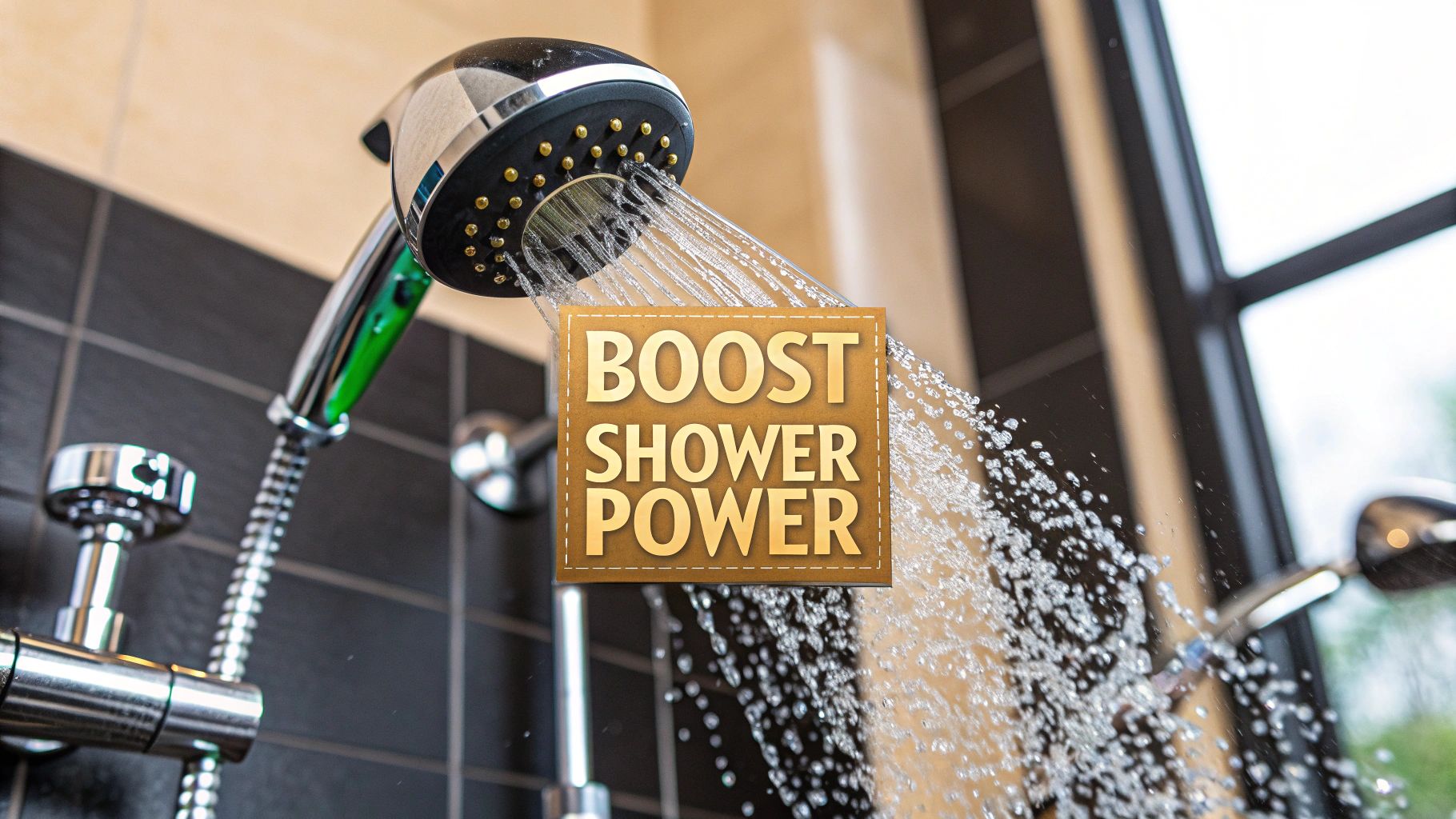
How to Increase Water Pressure in Your Shower Easily
Tired of a shower that just sort of… trickles? It’s one of the most common household annoyances, but the good news is you can often fix it yourself. Before you even think about calling a plumber, a few simple checks—like cleaning a clogged showerhead, making sure your water valves are fully open, or yanking out a hidden flow restrictor—can make a world of difference.
Figuring Out Your Low Shower Pressure Problem

Before you can boost that flow, you need to play detective. Whether your pressure dropped overnight or has been disappointingly weak for ages, it's just a symptom. Your job is to find the real culprit. Luckily, you can figure this out with a little process of elimination, starting with the easiest fixes first.
The very first question you need to answer is: Is it just the shower? Go turn on the faucet in your bathroom sink, then head to the kitchen. If water is blasting out of those taps but your shower is still pathetic, you've already got a huge clue. This tells you the problem is almost certainly at the showerhead itself or in the pipe directly behind it.
On the other hand, if every faucet in your house is lazy and slow, the issue is much bigger. This points to a systemic problem affecting your entire home, so you'll need to look at things like your main water valve or the pressure regulator.
Start with the Easiest Fixes
Let's begin with the most frequent and satisfyingly simple cause: a gunked-up showerhead. Over time, mineral deposits from hard water (I’m looking at you, limescale) build up and clog the little spray holes. It’s like an artery getting clogged; the flow just can’t get through.
I’ve seen this countless times. A client in an area known for hard water complained their shower had gotten weaker and weaker over the past year. We unscrewed the head and soaked it in a bowl of plain white vinegar for about 30 minutes. The amount of crusty buildup that came off was incredible. The result? They said their water pressure felt brand new, all from a ten-cent fix. This should always be your first move.
While you're at it, do a quick visual inspection of your water valves.
- The Shower Valve: This is the handle you actually turn. Sometimes they get old and don't open all the way, even when the handle is maxed out.
- The Main Shutoff Valve: This controls all the water to your house, usually found where the water line enters your home. Make sure it's turned fully counter-clockwise (fully open). It's surprising how often these get partially closed by accident.
Key Insight: About 40% of homeowners say they've had to deal with low water pressure. In my experience, the overwhelming majority of these cases are solved with these simple checks, not a major plumbing overhaul.
When It's Not Just the Shower
If you've run the taps and confirmed the low pressure is a house-wide issue, your investigation changes course. You can stop staring at the showerhead and start thinking about your home's main water supply.
This could mean a few different things. Is it just you, or is the whole neighborhood affected? The quickest way to find out is to ask a next-door neighbor if their water pressure is low, too. If their flow is perfectly fine, you know the problem is on your property. This is a crucial step—it tells you whether you should keep digging or if it's time to call the local water company.
If the problem is definitely yours, a malfunctioning water pressure regulator is a very common suspect, but we'll get into that a bit later.
Quick Fixes You Can Do in Under an Hour
Tired of a shower that feels more like a light drizzle than a refreshing spray? I've got good news. Often, the most powerful solutions don't involve calling a plumber or buying a bunch of specialized tools. You can make a huge difference in your shower's water pressure in less than an hour, using a few things you probably already have at home.
Believe it or not, the number one culprit behind a weak shower is usually a clogged showerhead. Over time, mineral deposits from your water—I’m talking about limescale and calcium—build up inside those tiny nozzles. This gunk slowly chokes off the water flow, turning what should be a strong spray into a pathetic trickle. A good, deep clean is often all it takes to bring it back to life.
Deep Cleaning Your Showerhead
Let's get that showerhead breathing again. All you'll need is some plain white vinegar, a sturdy plastic bag (like a freezer bag), and a rubber band or zip tie.
- Pour enough vinegar into the bag to completely submerge the face of the showerhead.
- Carefully slip the bag over the showerhead and secure it tightly with the rubber band.
- Let it soak. If the buildup looks minor, an hour should do it. For really stubborn, caked-on deposits, I’d recommend leaving it overnight.
Once it's done soaking, take the bag off and grab an old toothbrush. Give the nozzles a good scrub to dislodge any leftover gunk. Then, turn the shower on full blast for a minute or two to flush everything out. You should notice an immediate, satisfying improvement.
Finding and Removing the Flow Restrictor
If a deep clean didn't quite get you the power you were hoping for, the next thing to check is the flow restrictor. It’s a small plastic or rubber disc that manufacturers put inside the showerhead to meet water conservation standards. While it's great for saving water, it’s also the primary reason your shower might feel underwhelming.
This little part is surprisingly easy to deal with, as this visual guide shows.
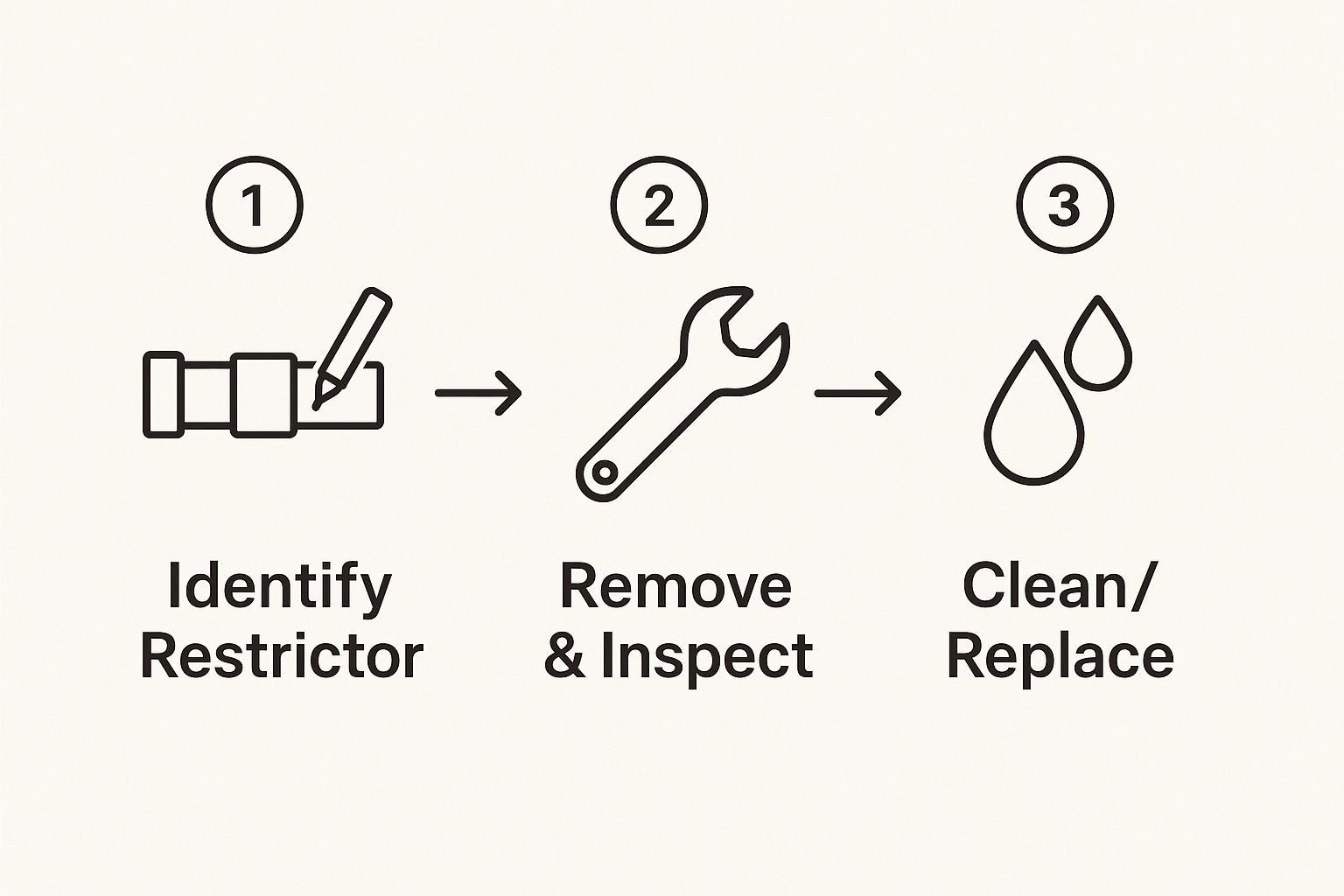
To get to it, simply unscrew the showerhead from the pipe (the shower arm). Peer inside the threaded end where it connects. You’re looking for a small, often brightly colored plastic disc, usually sitting inside a black rubber washer or O-ring.
You can usually pry it out with the tip of a paperclip or a small flathead screwdriver. Be gentle! Once it's out, just screw the showerhead back on and test it out. Most people are genuinely shocked by how much of a difference removing that one tiny piece of plastic makes.
A Quick Word of Caution: Removing the flow restrictor means you will use more water. If you're mindful of your water bill or live in an area with water conservation rules, you might want to think twice. An alternative is to buy a new showerhead specifically designed to feel high-pressure while still being efficient.
For a quick look at how these simple fixes stack up, here’s a handy table.
Easy Fixes vs Potential Pressure Gain
| Solution | Tools Required | Time Commitment | Potential Impact |
|---|---|---|---|
| Deep Clean Showerhead | Vinegar, plastic bag, rubber band, old toothbrush | 1-8 hours (mostly waiting) | Moderate to High |
| Remove Flow Restrictor | Pliers/wrench, paperclip or small screwdriver | 10-15 minutes | High |
These two steps are your best first line of defense against a weak shower. The federal government has even taken notice of consumer frustration with flow rates, which have historically been capped around 2.5 gallons per minute. A 2025 executive order, "Maintaining Acceptable Water Pressure in Showerheads," is set to explore a better balance between efficiency and a satisfying shower experience.
By tackling these two simple fixes, you've got a fantastic shot at solving your low-pressure problems all on your own. If you're still looking for more power, check out our complete guide on how to increase shower water pressure.
Choose a Showerhead That's Built for High Pressure
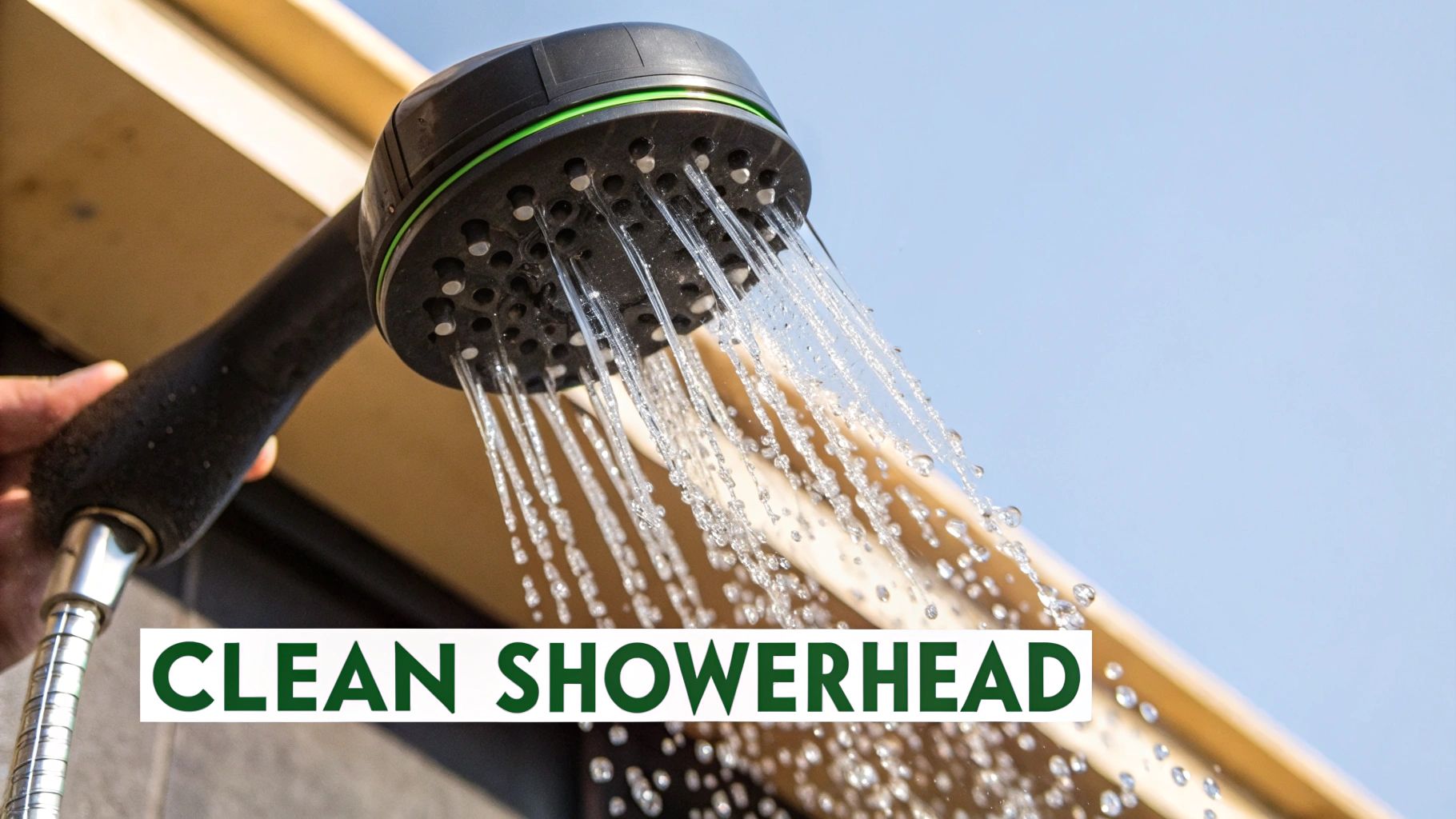
If you’ve tried all the easy fixes and your shower still feels more like a drizzle than a downpour, it might be time to look at the showerhead itself. Let's be honest, not all fixtures are created equal. Your current one might simply not be designed to deliver a powerful spray.
Upgrading to a modern model engineered for higher pressure can completely change your daily routine, even if your home's overall water pressure is just so-so. This isn't about forcing more water through the pipes; it's about smarter design. Many of the best high-pressure showerheads work by using innovative features to make the water feel more powerful, giving you a satisfying shower without magically creating more pressure.
Of course, before you spend any money, make sure your current fixture is as clean as possible. You can learn exactly how to do that in our guide on how to clean a shower head.
What's the Secret Behind a "High-Pressure" Showerhead?
The magic is all in the engineering. These fixtures don't just let water passively flow through; they actively manipulate it to increase its speed and intensity. It usually comes down to a couple of key design elements.
- Pressure Chamber Design: Many high-pressure models have a small, internal chamber that pressurizes the water just before it sprays out. Think of it like putting your thumb over the end of a garden hose—this compression accelerates the water, creating a much stronger and more invigorating stream.
- Clever Nozzle Patterns: The size, shape, and arrangement of the spray nozzles are critically important. By forcing the same volume of water through smaller or more strategically angled holes, the fixture dramatically increases the exit velocity of the water.
One of the biggest myths is that a "high-pressure" showerhead will automatically send your water bill through the roof. The truth is, many modern designs are incredibly efficient. They create that powerful feeling while often using less water than older, clunky fixtures.
Getting Great Pressure Without Wasting Water
When you're shopping for a new showerhead, you're really trying to strike a balance between a powerful, spa-like performance and smart water conservation. The good news is, you don't have to choose one over the other anymore.
There's been a massive shift in how these fixtures are designed. While a traditional showerhead might guzzle around 12 liters per minute, newer water-saving models average just 7.4 l/min under the exact same conditions. Thanks to smart engineering, that 40% reduction in water use doesn't mean you have to sacrifice pressure.
This push for efficiency is a global trend. Adoption rates for water-saving fixtures are already at 60% in the Middle East, 57% in Europe, and 47% in North America.
Ultimately, picking the right high-pressure showerhead comes down to understanding the tech. Look for models that specifically call out their pressure-boosting features. This one simple upgrade is often the final piece of the puzzle for fixing weak shower pressure for good.
Troubleshooting Whole-House Water Pressure Issues
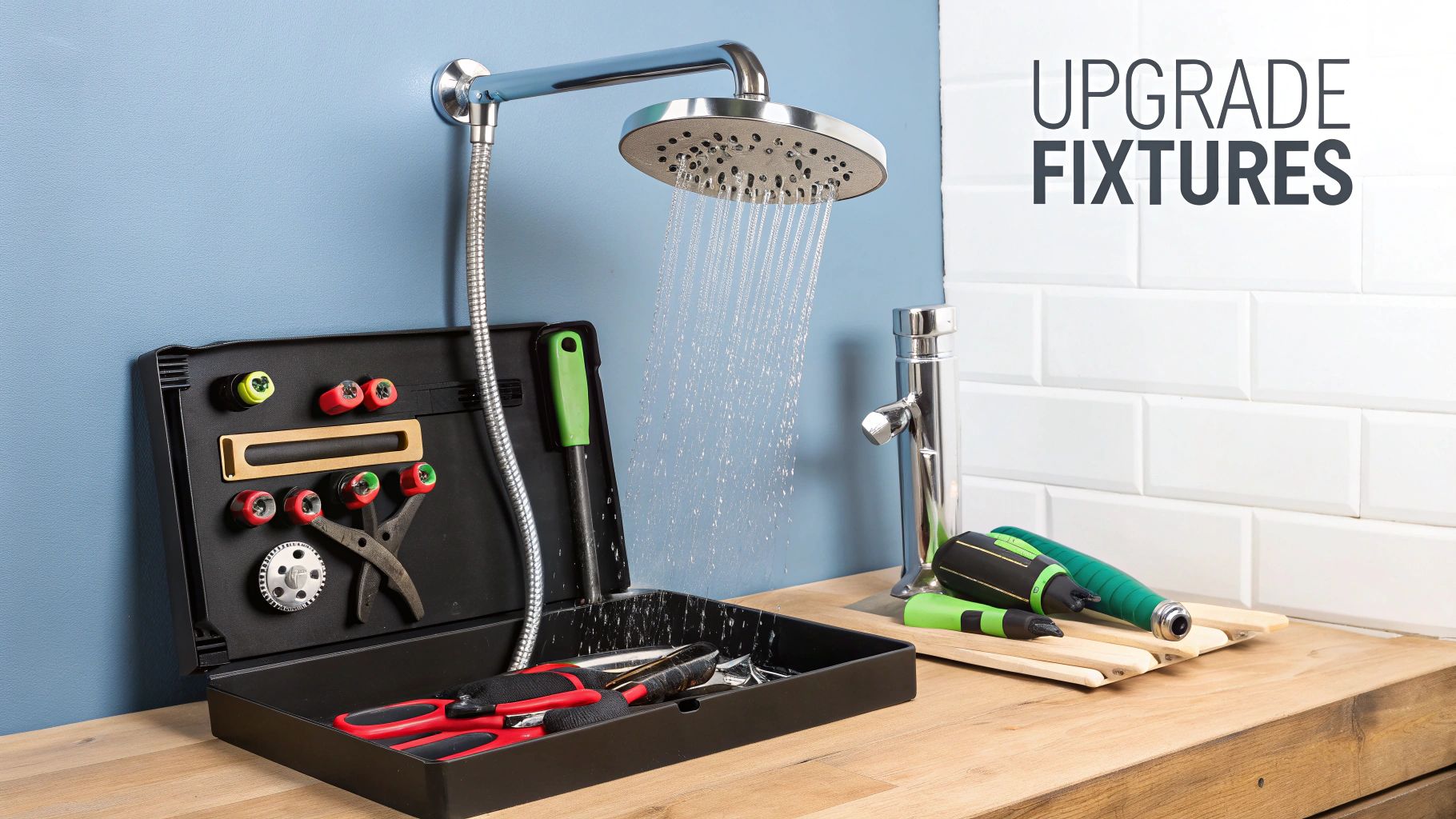
So, you’ve done a walk-through of your home, tested every faucet, and the verdict is in: it’s not just your shower. The low pressure is everywhere. When the entire house is suffering from a weak trickle, it’s a clear sign that the problem isn't a single clogged fixture. You're dealing with something more fundamental in your plumbing system.
When low pressure is a house-wide affair, my experience points to one of three likely suspects. It could be an issue with your main shutoff valve, a faulty pressure reducing valve (PRV), or a sneaky leak hidden somewhere in your pipes. The good news is you can do some detective work yourself before you have to call in a pro.
Check Your Main Water Supply Valves
Let's start with the simplest and most obvious check first. Every home has a main water shutoff valve located right where the city's water line enters your property—usually in the basement, a utility closet, or a crawl space. Your first mission is to make sure this valve is opened all the way.
You’d be surprised how often I’ve seen these valves, especially the round-handled "gate" style, get partially closed during some other household repair and just never fully opened again. To make sure it’s fully open, turn the handle counter-clockwise as far as it will go. If it moves, you might have just stumbled upon a wonderfully easy fix.
The Overlooked Pressure Reducing Valve
A lot of homes, particularly those in areas with high municipal water pressure, have a device called a pressure reducing valve, or PRV. It’s a bell-shaped contraption typically found on the main water line, right after the meter and shutoff valve. Its whole purpose is to tame the high pressure from the street down to a safe level for your home's pipes and appliances, usually somewhere between 50 and 70 PSI.
But like any mechanical part, PRVs wear out. Over the years, they can fail or get gummed up with sediment, which can cause your home's water pressure to nose-dive.
You can often tell if a PRV is on its way out by watching for a few tell-tale signs:
- Water pressure that seems to have a mind of its own, fluctuating from strong to weak.
- Strange banging or humming noises from inside your walls when you turn on a tap.
- Consistently low pressure at every single fixture in the house.
Pro Tip: Some PRVs have an adjustment screw on top, but I'd advise against messing with it yourself. Cranking it the wrong way can spike the pressure to dangerous levels, putting your pipes, water heater, and appliances at risk. A plumber can test the pressure accurately and tell you for sure if the valve needs adjusting or replacing.
The Search for Hidden Leaks
A leak, even a small one you can't see, can be a major pressure killer. Think about it: if water is constantly escaping the system somewhere between the street and your faucet, there's just less pressure left to push it out when you need it. This is one of the more serious causes of low pressure.
Luckily, your water meter is your best friend for leak detection. Here's how to use it:
- First, make sure absolutely everything that uses water is turned off. Every faucet, the dishwasher, the washing machine—all of it.
- Head out to your water meter and find the leak indicator. It’s usually a tiny triangle or a small star that spins when water is flowing through the meter.
- If that little indicator is moving at all, even just creeping along, you've got a leak somewhere.
If you confirm a leak but can't find any obvious signs of water damage, it's time to call a plumber right away. An undetected leak can cause a world of trouble and expensive structural repairs down the road.
And while you're tackling these bigger issues, remember that mineral buildup can still be a problem at individual fixtures. It never hurts to refresh your memory on how to clean a shower head with vinegar to keep everything flowing freely.
When to Consider a Water Pressure Booster Pump
https://www.youtube.com/embed/HPsNm937NrA
So, you've tried everything. You've scrubbed the showerhead until it shines, hunted down every potential leak, and twisted every valve to its fully open position, but your shower still feels more like a light drizzle than a refreshing spray. If simple tweaks haven't moved the needle, it’s probably time to stop looking for minor fixes and think about a more comprehensive, whole-house solution.
This is where a water pressure booster pump enters the picture. It’s a more significant upgrade, for sure, but in the right circumstances, it can completely transform your home's water flow.
How Does a Booster Pump Actually Work?
Imagine a booster pump as a personal trainer for your home's water supply. It’s an electric pump that a plumber installs on your main water line, right after the water meter. Its one and only job is to grab the water coming in from the city and give it a serious push, boosting the pressure before it circulates through your home.
The result isn't just a better shower—it’s an upgrade for your entire house. The kitchen sink, the washing machine, the garden hose… every single fixture gets a noticeable lift. This is the definitive answer when your home's incoming pressure is just fundamentally low (often below 40 PSI) and there’s nothing you can do about the supply coming from the street.
The desire for a better shower experience is huge and growing. The global market for systems that enhance shower performance is on track to hit around $5 billion in 2025 and is expected to surge to nearly $8.5 billion by 2033. This trend shows just how much people value good water pressure at home.
Is a Booster Pump the Right Move for You?
Let’s be clear: installing a booster pump is a professional job and a real investment. This is not a quick Saturday DIY project.
Key Takeaway: A licensed plumber should always handle the installation of a booster pump. They have the tools to measure your flow rate and pressure accurately, check the health of your plumbing system, and recommend the right size pump. A pump that's too powerful can be a disaster, potentially damaging your pipes and fixtures.
Here are a few common scenarios where a booster pump makes a lot of sense:
- Your house is at the end of the municipal supply line or situated at a higher elevation than the water main.
- You live in an older home with narrower, galvanized pipes that naturally restrict water flow.
- Your water comes from a well system that has inherently low pressure.
- You've gone through all the other troubleshooting steps with no lasting success.
If your water issues are connected to a well or storage tank, reviewing some frequently asked questions about water storage tanks can also give you some valuable context before making a decision.
Having a conversation with a qualified plumber is essential. When you do, ask them about pump sizing, how much noise it will make, and what kind of maintenance to expect. While it's a bigger undertaking than swapping out a fixture (and if you're tackling other plumbing tasks, our guide on how to replace a shower faucet can walk you through that process), a booster pump can be the final, satisfying solution to getting the strong, consistent water pressure you deserve.
A Few More Questions About Shower Pressure
Even after running through all the potential causes, you might still be wrestling with a few specific questions. It's completely normal. Let's tackle some of the most common things homeowners ask when they're trying to finally solve their low shower pressure woes.
Does a Water Softener Impact Shower Pressure?
Yes, it absolutely can. While water softeners are fantastic for preventing the mineral scale we talked about earlier, they can sometimes become the problem themselves. Over time, the resin beads inside the softener can get clogged with sediment or just get too compacted.
When this happens, the softener creates a bottleneck in your home's water supply. Think of it like a traffic jam right after the water enters your house. This restricts the flow to every faucet and fixture, leading to a noticeable pressure drop in your shower. Sticking to a regular maintenance schedule and making sure the softener’s regeneration cycles are running correctly is key to preventing this.
Is It Possible to Damage My Pipes by Increasing Water Pressure?
That’s a smart question to ask, and the answer is a definite yes—if you crank it up too high. Most residential plumbing systems are built to handle water pressure up to about 80 PSI (pounds per square inch).
Anything above that puts constant, excessive stress on the entire network of pipes, joints, and appliance connections. Over time, that strain can cause weak points to fail, leading to everything from tiny pinhole leaks to a full-blown burst pipe.
To strike the right balance between a satisfying, strong flow and protecting your plumbing, I always recommend aiming for a pressure between 50 and 70 PSI. This is the sweet spot for a great shower experience without putting your pipes at risk.
How Can I Tell if the Low Pressure Is Just in My House?
Figuring out if the problem is yours alone or a bigger neighborhood issue is a crucial first step. The easiest way to do this? Just walk next door and ask your neighbors if they're dealing with weak showers, too.
If their water pressure is perfectly fine, the problem is almost certainly on your property. That simple check helps you narrow your focus to your own plumbing, from the main shutoff valve right up to the shower head itself. And if you're feeling ambitious and updating other fixtures, our guide on how to install a bathroom faucet has some great tips.
Another good clue is the timing. Does the pressure only dip during peak hours, like when everyone on your block is showering for work in the morning? That could point to a strain on the municipal supply. But if you have low pressure all day, every day, the culprit is most likely hiding somewhere inside your home.
At Cranach, we're convinced that a clean, healthy, and powerful shower is something everyone should have. If you’ve decided that a new, high-efficiency fixture is the best fix for your home, take a look at our collection of premium shower systems. They're designed to deliver an incredible experience. Find the perfect upgrade by visiting us at https://cranachhome.com.


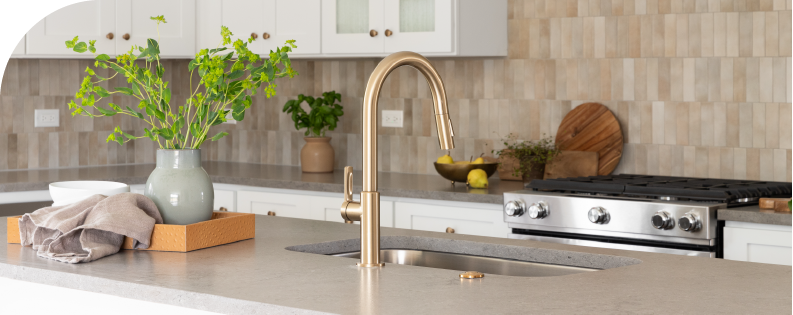

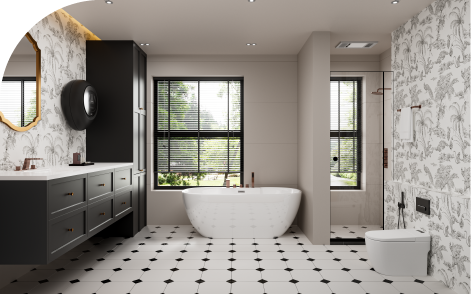
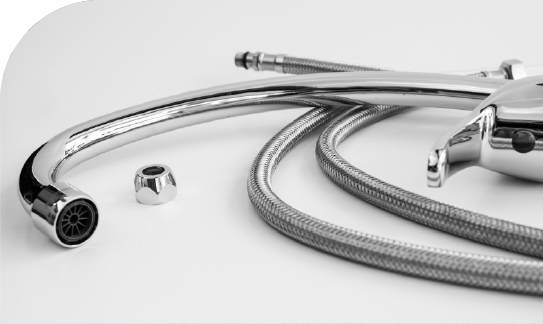
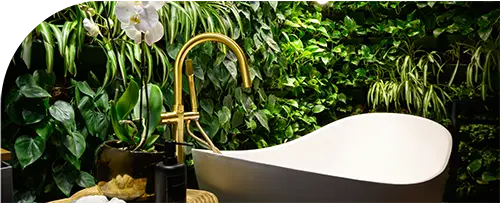
Leave a Reply